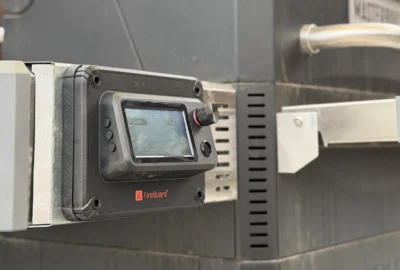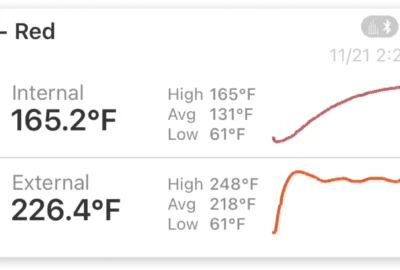Commercial, Science, Using your FireBoard
How a FireBoard can simplify HACCP programs
What is HACCP and why do we need it?
For those not familiar with the term HACCP, simply put it is a set of guidelines used by the food industry to eliminate or reduce health risks involved in food preparation and food service. Adopted from food safety standards designed by NASA, HACCP was first presented to the general public in 1971 at the National Conference on Food Protection. In time, HACCP systems were adopted into law around the world in the interest of protecting the general public from needless health outbreaks that can easy be prevented through safe food handling practices. To learn more about what is at risk, see the Center for Disease Control and Prevention’s micro site on Foodborne Outbreaks. In fact, in 1994 the International HACCP Alliance was started as a global food safety education and information sharing community.
Click below to watch an interview with Plow Boys BBQ Pit Boss Todd Johns explain how he uses a FireBoard to help with monitoring and record keeping for his HACCP plan.
Standing for Hazard Analysis of Critical Control Points, HACCP programs are custom made for individual businesses to identify risks and the specific prevention tactics necessary for safe food production. This is accomplished using the seven core principles for a HACCP program. Many of the risks deal with limiting bacteria growth in food via monitoring the food’s internal temperature. FireBoard has designed the best tools food service professionals can use to keep your food safe to eat. The Spark instant read thermometer is excellent for a line cook to take quick temp readings of a steak or chicken breast or for a front of the house team member like the expo or GM to read the temp of a soup before going out. Not to mention, the Spark’s ability to use NFC tags for organized record keeping with no data entry required. Click here for our post on how to use NFC labels with your Spark. The FireBoard 2 thermometer can collect thermal data from six different probes, allowing the user to monitor the cooling of six different food products, while storing the information of when a monitored food item reached a desired temperature, and how long it took.

Using FireBoard’s Spark thermometer to monitor the Critical Control Points for food safety will give a line cook an accurate temperature reading in about a second. This performance counts in the fast paced arena of commercial kitchens.
It is worth mentioning that not every restaurant or food process needs a HACCP plan authored for them. However when deemed necessary, (usually by local health department or federal entities such as the FDA or USDA governing specific processes) a separate HACCP plan is devised for each food process. Contact your local Health Department to find out if your business needs to be using a HACCP plan.

Establishing a reliable system of record keeping , one of the seven core principles to a successful HACCP system.
Seven Core Principles of HACCP
In devising a HACCP system, there are seven key points to address as listed below. Listed along side are real world examples of how these principles are applied, relative to the cooling process of smoked pork shoulder from smoker to the refrigerator. Thanks to Plow Boys BBQ President and Chief Pit Master Todd Johns for sharing part of his HACCP plan.
- Conduct a Hazard Analysis. This is where the biological hazards that can happen during the food process are determined and a preventive measures are identified. In the case of cooling meat from the smoker to be frozen bacteria can multiply at unacceptable rates if not cooled down rapidly.
- Identify Critical Control Points, which is a point in the food process where controls can be used to eliminate or reduce food safety hazards. For the process of cooling cooked meat, the critical control points are the rate of time at which the meat is cooled and to what temperature. Since longer, slower cooling increases the amount of time bacteria multiplies in food.
- Determine the Critical Limits, which are the minimum and/or maximum values in which a safety hazard can be controlled. If the temperature and speed of cooling are the Critical Control Points, the precise amount of time and to what temperature is required to limit bacteria growth are the Critical Limits. The Critical Limits for cooling meat is interesting: right out of the smoker, the meat needs to be cooled down from 140ºF to 70ºF in two hours and then from 70ºF to 41ºF inside of an additional 4 hours. That is a maximum of six hours total from cooking to cold storage.
- Critical Control Point Monitoring Requirements need to be clearly defined. This will include how temperatures will be taken. Using a FireBoard thermometer will continuously write temperature data to the cloud account creating a document of these Critical Control Point, specially time and temperature in graph form.
- Implement Corrective Actions. What to do if a deviation occurs and a critical limit is not met. In our meat cooling example, when temps are not reached in specified time frame, the process starts over with the meat being returned to the smoker, brought back up to 140 to kill off the bacteria, and then the cooling process is restarted: reach 70ºF inside of 2 hours and then down to 40ºF inside an additional 4 hours.
- Verification Procedures, are developed to ensure your HACCP program is working as intended: good Health Department inspection scores, no reported illnesses and regular internal monitoring including daily record keeping and annual process review.
- Establish a Record Keeping System are the documents that prove that Critical Limits are being met. This can take the form of a log book, or if using a FireBoard the urls from the user app.

The FireBoard App is the perfect record keeping tool for tracking the Critical Limits of a meat cooling HACCP system. In this case the meat needs to cool down from cooked temp to 70ºF in two hours and then down to 41ºF in the ensuing four hours.
Safety and Success, Hand in Hand
Given the critical nature of temperature accuracy and how frequently temperatures need to be taken, it is easy to see how valuable a FireBoard would be to this process. The feature of having a thermometer that takes continuous readings and writes them to a log alleviates the need for manual data entry and presents the data in graph form that makes it easy to spot deviations. Not to mention the alerts that can be set in the FireBoard app.

Vacuum sealing after proper cooling, part of a reduced oxygen packaging plan. And when weighed out, a handy solution to portion control.
Best of all HACCP programs are more than a safety protocol and more of a productivity tool. Food prep is a competitive business endeavor with narrow success rates. Having to follow safety protocols such as these eliminates a level risk keeping liabilities low. This allows businesses to focus their efforts in the right direction, benefiting from the mistakes history has written. Click here to read how the Kansas City Country Club uses a FireBoard in conjunction with their HACCP plan to insure safe cooking temperatures and storage temperatures by monitoring their refrigeration systems club wide. They even won an award for incorporating FireBoard thermometers in their food safety program from the CMAA or Club Management Association of America

The Kansas City Country Club uses FireBoard thermometers to record data for their HACCP plan.









Leave a reply